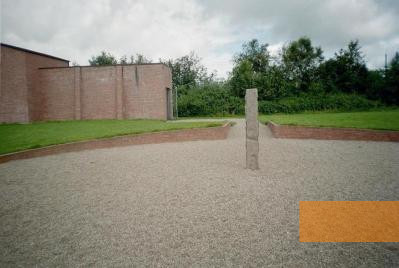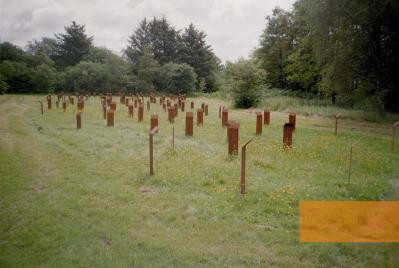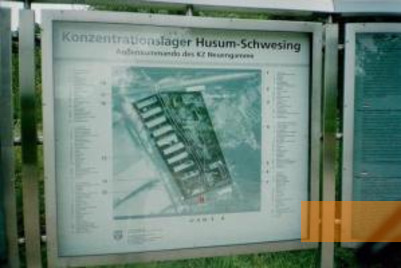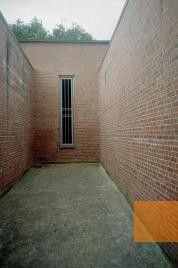The »Husum-Schwesing Concentration Camp Memorial« is located close to the North Frisian city of Husum, not far from the township of Schwesing. From September until December 1944, up to 2,500 prisoners had to conduct forced labour in this camp constructing the »Frisian Wall« fortifications.
After the Allies had landed in Normandy in June 1944, Adolf Hitler issued an order on August 28, 1944, for the construction of a system of fortifications along the German North Sea coast and the Danish border. Several forced labour camps were established for this purpose. On September 25, 1944, the SS brought about 1,500 male prisoners from the Neuengamme concentration camp to Schwesing near Husum. The prisoners were accommodated in a barracks camp which had initially been built for the Reichsarbeitsdienst (RAD, Reich Labour Service) to house 400 people. The camp was renamed »Husum-Schwesing satellite camp«. On October 20, a further transport of 1,000 prisoners from the Neuengamme central camp arrived, meaning there were close to 2,500 people incarcerated at Husum-Schwesing. On November 1, the prisoners who had arrived last were deported to the Ladelund satellite camp. The prisoners in Husum-Schwesing were deployed in forced labour constructing fortifications. Most of them had to dig anti-tank trenches. The work was physically exhausting and the prisoners were constantly abused by the Kapos. For the most part the prisoners were forced to stand in water, which leaked from the tunnel openings they were digging. Many fell ill and died in Husum-Schwesing due to the hard labour, scant food supplies and lack of hygienic facilities: about six prisoners died each day, about half of the inmates were sick. The camp was shut down on December 29, 1944, after the military situation had developed differently than previously expected by the Germans. The SS transported the prisoners back to the Neuengamme concentration camp. The »Frisian Wall« was never completed.
The majority of the prisoners in Husum-Schwesing came from the Netherlands. Other large prisoner groups came from France, Denmark and Poland. Moreover, there were inmates from the Soviet Union, Germany, Belgium, Italy, Yugoslavia, the Protectorate of Bohemia and Moravia (today the Czech Republic), and Spain. It can only be estimated how many people perished in Husum: it is assumed that there were between 300 and 400 fatalities.
The »Husum-Schwesing Concentration Camp Workgroup« published a history of the Husum-Schwesing satellite camp in 1983. Between 1985 and 1994, the community of Northern Friesland purchased large parts of the former camp premises. On November 27, 1987, a memorial was dedicated on the ground. Information panels present the camp's history, and located in a red brick building is a model of the former satellite camp. A barred window and narrow distances between the walls symbolise the crowded atmosphere of camp life. In 2000, the old camp path was excavated. Located on the premises since 2001 is a »field of stelae« made of rusting metal columns bearing inscriptions of the names of those who perished at Husum-Schwesing. Each one of the over 300 stelae represent one victim.
- Name
- KZ-Gedenkstätte Husum-Schwesing
- Phone
- +49 (0)4841 897 30
- Fax
- +49 (0)4841 8973-111
- Web
- https://kz-gedenkstaette-husum-schwesing.de/
- gedenkstaette@nordfriesland.de
- Open
- The memorial is accessible at all times.





